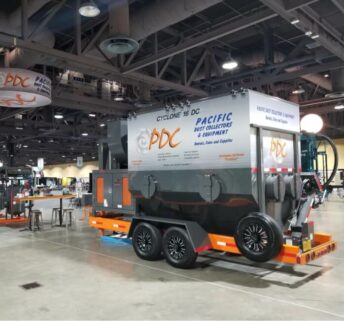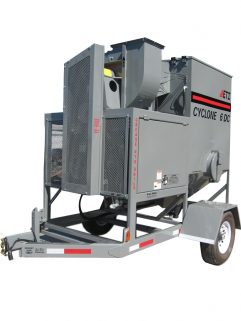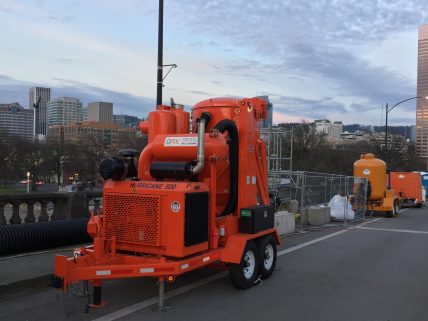Cyclone dust collectors are an increasingly popular option today because of their ability to remove up to 99% of dust before it gets to the filter. Cyclone separators can also be used with other models of dust collectors and vacuum cleaners to reap the same benefits. In this article, we share with you exactly how cyclone dust collectors and separators work.
The Process of Dust Separation
Cyclone dust collectors can separate up to 99% of dust particles that are smaller than 10 microns, depositing them into a bin before passing through the filter. This means that you do not have to clean your dust collector or filter nearly as often when you use a cyclone separator. The process is as follows:
- The air that enters the cyclone dust collector travels in a circular path, creating a centrifugal force that drives out any particles that are heavier than air into an outside wall. This dust and debris eventually end up in a collection bin when they have stopped circulating due to gravity.
- Air and very fine dust are not deposited in the collection bin, instead passing through the centrifugal force to the center of the cyclone and subsequently, the outlet tube to the dust collector or filter, where they can be removed outside.
- The particles in the collection bin are unable to reenter the cyclone unless there is a gas leak. The container for this bin can be as large or small as required, however it should be able to withstand the vacuum pressure of a clogged hose.
- In the event of a gas leak, these particles will be forced up and out of the cyclone. When that happens, the efficiency of your dust collector is greatly reduced. Hence, it is prudent to check that there are no leaks between the collection bin and the bottom of the cyclone from time to time.
What Gets Separated?
A cyclone effectively filters out anything heavier than air, including dust particles and liquids. A general rule of thumb is that if you can see the particle with your naked eye, they will be successfully separated into the collection bin. Very fine dust, classified as those below 2.5 microns, generally bypass the cyclone before getting vented outside. It is important to note that particles 10 microns and below are particularly dangerous for health, which is why you should never vent a cyclone indoors without using a quality filter.
Purchase Cyclone Dust Collectors from Pacific Dust Collectors
Are you looking to purchase a cyclone dust collector for your workshop or factory? If so, you have made the right decision. When you shop with us at Pacific Dust Collectors, you can find a wide range of models to suit your needs and budget, including new and used dust collectors. As a leading provider of dust collectors and industrial vacuums in the West Coast, we are committed to helping our clients find solutions for their cleaning tasks. If you have any queries or would like a recommendation, please feel free to contact us today.



